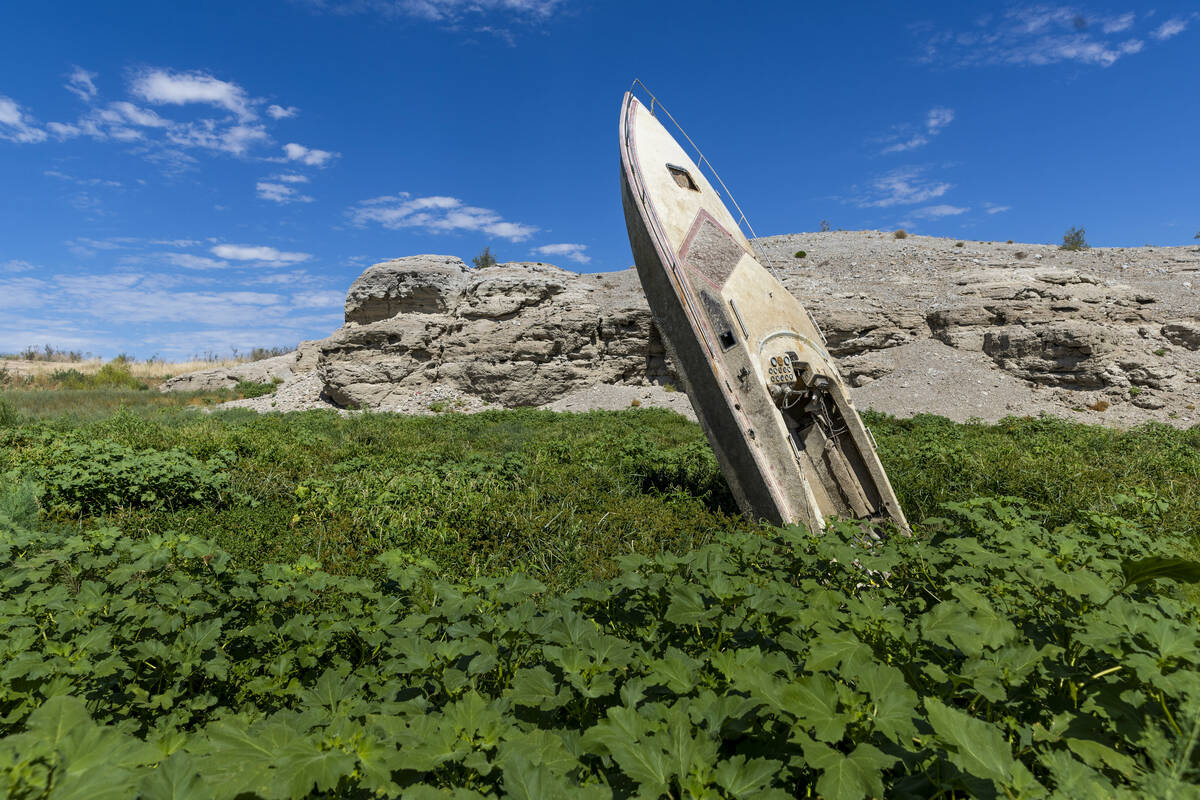Popular Lake Mead site closing after reports of crime, damage

The National Park Service is closing a camping site in Lake Mead National Recreation Area after an influx of “residential-type visitors” led to damaged natural resources and high rates of crime, according to a release.
Starting Thursday, Government Wash will be closed to motor vehicle access and overnight camping. The roads leading into the site, Government Wash Road and 8.0 Mile Road, will be blocked.
While not permanent, the timeline for reopening the wash for camping and vehicle access is not known, said John Haynes, public affairs officer for the recreation area.
“It varies who all is out there,” Haynes said.
During peak season, which tends to be nonsummer months, there can be a couple hundred overnight visitors staying at the wash.
“That’s a lot of people in a small area,” Haynes said. In the winter, “snowbirds” take to the wash. There are also campers who do not cause damage and are being cooperative with efforts to manage the site, Haynes said.
The National Park Service said visitors to Lake Mead National Recreation Area will still be able to hike, bike and visit the shoreline within 100 feet of the water’s edge.
A ‘primitive’ area
The site has become increasingly popular with long-term visitors as water levels have gone down over the past decade, the park service said. Haynes said that outside of the area’s natural beauty, it’s not clear why the area attracts so many visitors.
But the release states that the area does not have “sufficient infrastructure, facilities or services available” to support the use of the site by resident-type visitors.
“That’s a primitive area, so there’s really no facilities to support them,” Haynes said. There are no restrooms or other structures.
As a result, the area is seeing “natural and cultural resource damage, high rates of serious criminal activity, illegal and unauthorized road creation and an overall declining visitor experience and negative reputation for the area,” according to the National Park Service.
High rates of crime
“In the past five years, there have been 1,365 incidents in that area alone, requiring park law enforcement or firefighting personnel response,” said Trouper Snow, chief ranger.
“We have seen unacceptable levels of resource damage and crime, which is a drain on our park staffing as it draws resources from traditional high use areas. The myriad of illegal roads and long-term encampments have created an unwelcoming environment for those who recreate throughout the Government Wash area,” he continued.
Haynes said that due to the high levels of crime, the issue has been on the park’s radar for a while. “People get nervous about going out there,” he said, adding that the wash’s reputation among people trying to enjoy normal recreation is poor.
The website, addressing the increase in law enforcement responses to the area, said that there have been more than 500 incidents between January 2022 to February of this year, ranging from vehicle registration infractions and camping violations to assaults, sex offenses and fatalities.
It can be difficult for someone to alert law enforcement to their location amid a maze of illegal roads and limited landmarks, Haynes said.
“It’s not just crime that we deal with,” he added. The park gets reports of medical emergencies as well.
Damage to natural and cultural resources
Around the wash, there are more than 100 miles of illegal roads created by visitors, according to the park’s website.
These illegal roads have damaged fragile ecosystems and cultural resources, which might include Native American remains, artwork and other evidence of spending time in the area, Haynes said.
According to the park’s website, staff have been reporting large amounts of trash, human waste and illegal campfire rings in the wash.
Moving forward with the closure, National Park Service staff will be assessing damage to cultural and natural resources, surveying illegal roads and planning future use options in tandem with local tribes, community and recreation groups, the release said.
Community meetings on the issue are being planned for this fall, the National Park Service said. “The people out there using the park are some of the people that have the best ideas on how to help manage it,” Haynes said.
Contact Estelle Atkinson at eatkinson@reviewjournal.com. Follow @estelleatkinsonreports on Instagram and @estellelilym on X.